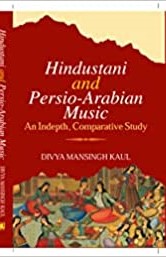
Contents: Foreword. Acknowledgement. List of abbreviations. Introduction. 1. History and development of the music of the Persio-Arabian Region and Hindustani Music. 2. Melodic mode of the countries of the Persio-Arabian Region. 3. Raga: The Hindustani Melodic Mode. 4. Blending of the melodic mode of the Persio-Arabian Region and the Hindustani Raga. 5. Iqa-Rhythmic melodic mode of the Persio-Arabian Region-Comparison with the Tala of Hindustani Music. 6. Instruments. 7. Tasir and Rasa--comparative analysis of their emotive qualities. 8. Forms and other comparable aspects of the music of the Persio-Arabian Region and Hindustani Music. Conclusion. Bibliography. Index.
"The medieval period was noteworthy in Indian history for the migrations from time to time of peoples and races from West and Central Asia, into the Indian sub-continent; this influenced the political and cultural panorama resulting in a harmonious blending of cultures. This book discusses and captures this closeness and commonality between two rich and profound music cultures of the Persio Arabian Region and India. Its broad canvas covers the following concepts and aspects of music, which would be of interest to students of music as well as the lay reader:
The historical perspective of Hindustani music and the music of the Persio - Arabian Region.
Description and comparison of the Melodic Mode, Maqam and the Raga.
Fusion and blending of the Magan and Raga, in the Medieval Period in India.
Striking resemblance of Iqa with Tala, the metric units of the two music systems.
Existence of similar instruments; whether they borrowed from each other during the course of evolution.
The emotional element, Tasir and corresponding Rasa.
The ornamentation techniques Tarkib, Tahrir and Gamak having identical elements.
The folk music of the two regions sharing common sociological dimensions, revealing common practices and customs." (jacket)